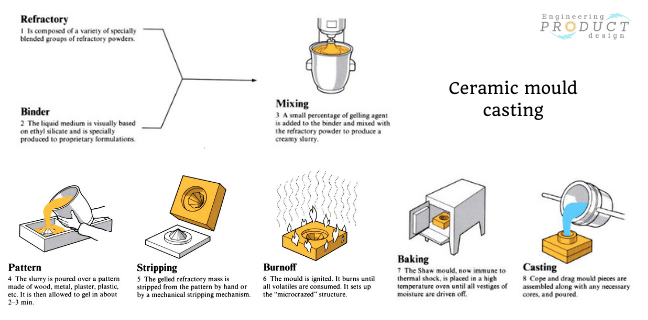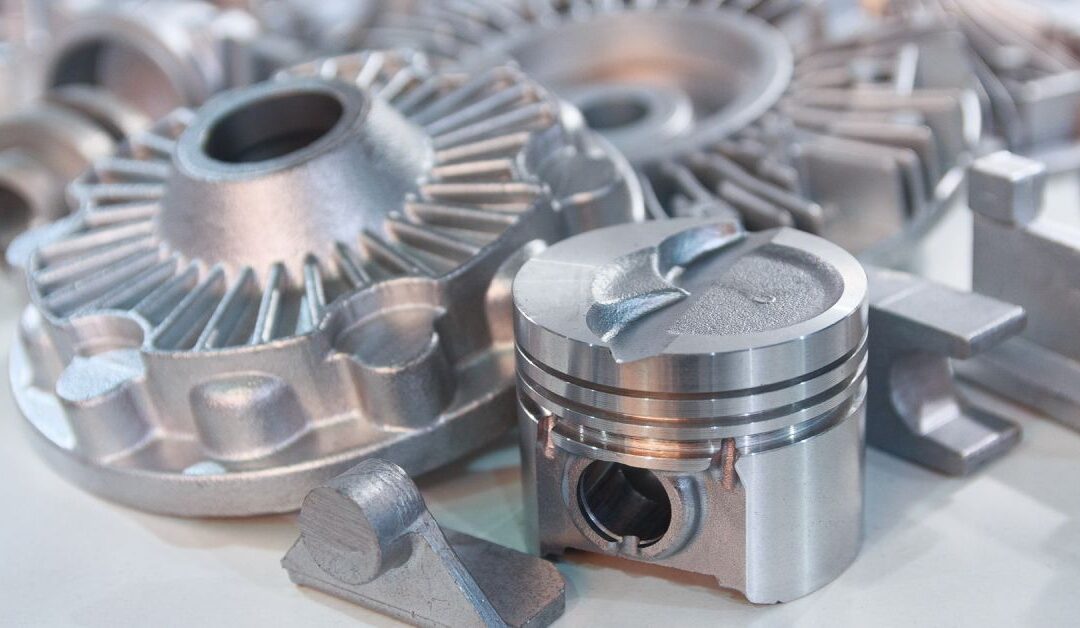The evolution of Metal Castings in modern manufacturing
The Duty of Metal Casting in Progressing Production Technologies
Metal Casting have especially influenced the evolution of making modern technologies. They use special design versatility, enabling the production of complex geometries necessary for various applications. Modern spreading techniques are being enhanced by developments like 3D printing and automation. These developments not just improve performance but likewise address obstacles in precision and sustainability. As markets continue to progress, the duty of Metal Casting remains essential in forming their future. What exists in advance in this vibrant field?
The Evolution of Metal Casting Strategies
As the need for precision and efficiency in manufacturing has actually expanded, the advancement of Metal Casting techniques has undertaken considerable change. Historically, Metal Casting began with straightforward methods such as sand spreading and lost-wax spreading, which allowed craftsmens to create elaborate forms. With time, developments in modern technology presented processes like die casting and investment spreading, improving accuracy and minimizing waste. Metal Castings. The intro of computer-aided design (CAD) and simulation software application revolutionized the drawing board, enabling makers to anticipate prospective concerns and maximize layouts prior to manufacturing. In addition, the advancement of new materials, such as advanced alloys and composites, has broadened the scope of applications for Metal Casting. Automation and robotics have additional refined casting procedures, boosting consistency and performance. Therefore, the Metal Casting industry has actually adjusted to satisfy the requirements of modern manufacturing, concentrating on sustainability and technology to continue to be affordable in an ever-evolving market
Applications of Metal Casting in Secret Industries
The improvements in Metal Casting methods have actually opened up a broad range of applications across different industries. In the automotive market, Metal Casting are integral for producing engine blocks, transmission real estates, and various other crucial parts that need high strength and sturdiness. The aerospace industry makes use of castings for elaborate components like turbine blades and architectural components, ensuring light-weight yet durable remedies for aircraft.

The building market utilizes Metal Casting for architectural elements such as beam of lights and fittings, adding to the stability of structures and infrastructure. In the power field, castings play an essential function in making components for wind turbines and power generation devices, improving performance and reliability. On top of that, the medical field benefits from precision spreadings used in medical tools and prosthetics, demonstrating the flexibility of Metal Casting across diverse applications. This wide application emphasizes the importance of Metal Casting in contemporary manufacturing techniques.
Advantages of Metal Casting in Modern Manufacturing
Metal Casting use countless advantages that significantly enhance modern manufacturing processes. One crucial benefit is design versatility; Metal Casting enables the production of complex shapes and elaborate geometries that are impossible or frequently difficult to attain with various other making methods. This capability allows manufacturers to maximize product layouts for performance and efficiency.
Furthermore, Metal Casting can support a large range of products, including steel, iron, and aluminum, which can be tailored to meet details mechanical residential properties and rust resistance requirements.

Cost-effectiveness is one more notable benefit; Metal Casting processes can produce large quantities of get rid of very little product waste, thereby reducing production costs.
The sturdiness of actors metal elements adds to the longevity of products, reducing the demand for frequent substitutes. Generally, the benefits of Metal Casting considerably contribute to performance, sustainability, and advancement within modern-day production environments.
Innovations Driving the Future of Metal Casting
While conventional Metal Casting strategies have offered the industry well for years, current advancements are positioned to revolutionize the field. Advances such as 3D printing innovation permit fast prototyping and the manufacturing of complicated geometries that were formerly unattainable. These technologies not only enhance design versatility however likewise minimize waste and reduce lead times. In enhancement, the integration of automation and robotics in casting procedures is simplifying operations, improving accuracy, and enhancing worker security. Moreover, the advancement of brand-new alloys and composite materials is allowing the production of more powerful, lighter castings tailored for particular applications. Digital technologies, including expert system and artificial intelligence, are enhancing casting parameters and anticipating upkeep, driving better quality assurance. Jointly, go now these advancements are pressing the borders of Metal Casting, cultivating greater efficiency and sustainability in manufacturing, and placing the sector for future growth and competitiveness.
Challenges and Solutions in Metal Casting Processes
As developments in Metal Casting innovation remain to reshape the market, various obstacles continue to be that suppliers must resolve to completely take advantage of these developments. One considerable problem is the variability in material homes, which can cause irregular high quality and performance. This irregularity usually arises from changes in resources and processing problems. In addition, the increasing costs of power and products position financial restrictions, pushing manufacturers to look for a lot more efficient procedures.
To deal with these difficulties, business are progressively adopting automated systems and advanced simulation strategies to boost accuracy and uniformity. Applying quality assurance procedures throughout the manufacturing procedure also aids in detecting defects early. Investing in study for alternative products may minimize costs and boost sustainability. By attending to these challenges with ingenious remedies, the Metal Casting industry can company website boost productivity and keep competition in the advancing production landscape.
Often Asked Questions
What Materials Are Typically Used in Metal Casting Processes?
Common materials utilized in Metal Casting procedures consist of light weight aluminum, iron, magnesium, and bronze. Each material possesses more unique residential properties that accommodate various applications, boosting the versatility and performance of the final actors items in numerous sectors.
How Do Environmental Regulations Effect Metal Casting Workflow?
Environmental guidelines oblige Metal Casting operations to embrace cleaner techniques and innovations, typically boosting manufacturing prices. Conformity might cause cutting-edge procedures that minimize waste and exhausts, inevitably advertising sustainability within the Metal Casting market.
What Are the Security Procedures in Metal Casting Facilities?
Security steps in Metal Casting centers consist of appropriate air flow, individual protective devices, regular safety training, equipment maintenance, and adherence to safety and security laws, ensuring a secure setting for workers while decreasing dangers connected with hazardous materials and procedures.
Exactly How Is Quality Controlled in the Metal Casting Process?
Quality control in Metal Casting includes strenuous inspections, including aesthetic evaluations, dimensional checks, and product testing. Adherence to market criteria and applying top quality monitoring systems assures that castings meet given demands throughout the production procedure.
What Is the Future Task Expectation for Metal Casting Professionals?
The future work expectation for Metal Casting specialists shows up encouraging, driven by developments in technology and enhancing demand across different sectors (Aluminum Castings). Development in automation and sustainable methods will likely create brand-new possibilities in this sector
Historically, Metal Casting began with easy techniques such as sand casting and lost-wax spreading, which allowed artisans to produce complex forms. Over time, improvements in modern technology presented procedures like die casting and investment casting, enhancing precision and decreasing waste. In addition, the medical field benefits from precision castings used in surgical tools and prosthetics, showing the flexibility of Metal Casting throughout varied applications. Metal Casting use many advantages that greatly enhance modern-day production processes. Common materials used in Metal Casting processes include aluminum, magnesium, iron, and bronze.